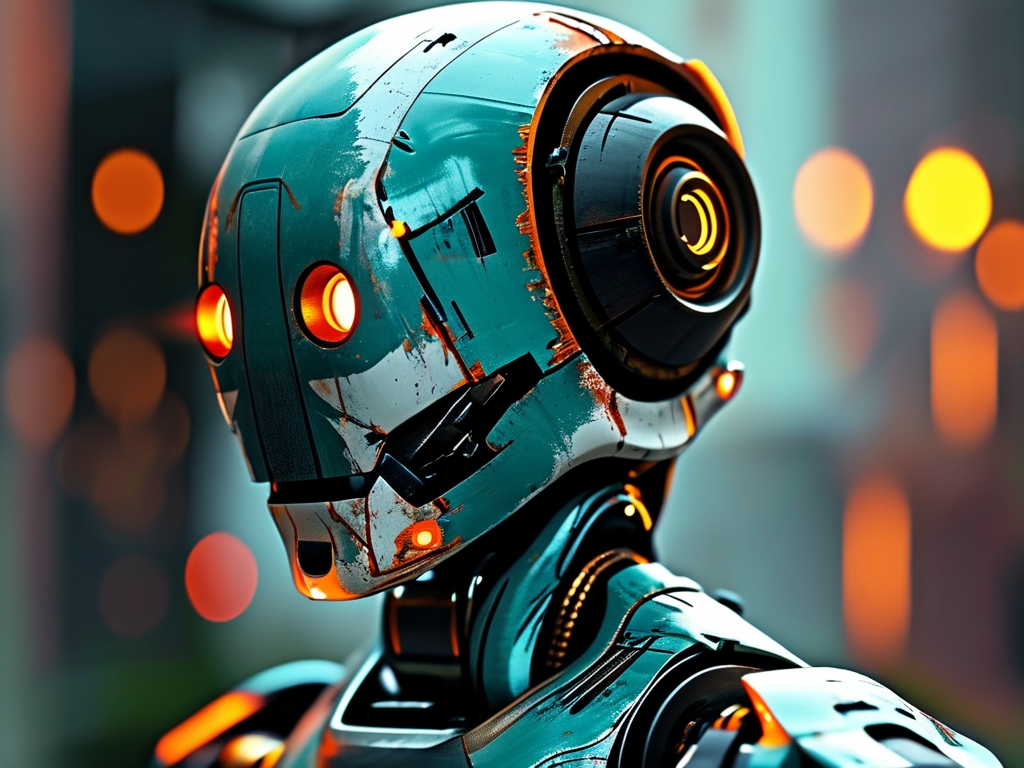In an era where technological advancements redefine human boundaries, robotic camouflage technology has emerged as one of the most groundbreaking—and controversial—innovations of the 21st century. By enabling machines to mimic human appearance, behavior, and even emotional responses, this technology challenges our understanding of identity, trust, and ethics. As robots increasingly infiltrate daily life, the implications of their ability to "disguise" themselves demand urgent scrutiny.

The Mechanics of Robotic Camouflage
Robotic camouflage operates at the intersection of artificial intelligence, material science, and biomechanics. At its core, the technology involves three key components:
-
Physical Mimicry: Advanced synthetic skins, embedded with sensors and actuators, allow robots to replicate human facial expressions, gestures, and textures. Materials like electroactive polymers enable real-time adjustments to skin tone and elasticity, mimicking biological tissue. For instance, projects like Hanson Robotics’ Sophia use nanotechnology-based "frubber" to simulate human-like facial movements.
-
Behavioral Adaptation: Machine learning algorithms analyze vast datasets of human behavior to generate context-aware actions. These systems leverage natural language processing (NLP) and computer vision to interpret social cues, enabling robots to engage in lifelike conversations or respond appropriately to emotional triggers. OpenAI’s GPT-4, integrated into humanoid robots, exemplifies this capability.
-
Environmental Blending: To avoid detection, some robots employ adaptive camouflage inspired by biological models like octopuses. Light-sensitive panels or projection mapping allow machines to alter their visual appearance in real time, blending into backgrounds or impersonating objects. Military prototypes, such as DARPA’s "Soft Robotics" initiative, already deploy such features for stealth operations.
Applications: From Healthcare to Espionage
The potential applications of robotic camouflage are vast, spanning both benevolent and contentious domains:
-
Healthcare: Robots disguised as humans could provide companionship to elderly patients or assist in therapy for individuals with social anxiety. For example, Japan’s PARO therapeutic robot seal—though not fully camouflaged—demonstrates how anthropomorphic design fosters emotional connections. A human-like robot could take this further, offering nuanced interactions without triggering discomfort.
-
Customer Service: Hospitality and retail sectors experiment with humanoid robots to enhance user experiences. Camouflaged robots in hotels, like Henn-na Hotel’s android staff, greet guests and handle bookings, though their mechanical features remain apparent. Future iterations with perfected camouflage could erase this distinction entirely.
-
Military and Surveillance: The darker side of this technology lies in espionage and warfare. Militaries worldwide invest in robots that infiltrate enemy lines by impersonating civilians or wildlife. In 2022, reports revealed Chinese-developed drone prototypes resembling birds, capable of conducting undetected surveillance. Such tools risk destabilizing global security if deployed unethically.
-
Social Manipulation: Malicious actors could exploit camouflaged robots for scams or misinformation. Imagine a robot impersonating a trusted figure to extract sensitive data—a scenario echoing the rise of deepfake fraud but with physical presence amplifying credibility.
Ethical Quandaries and Societal Risks
While the benefits are tantalizing, robotic camouflage raises profound ethical dilemmas:
-
Identity and Consent: If a machine mimics a specific person—living or deceased—who owns the rights to that identity? Legal frameworks lag behind technology, as seen in debates over deepfake legislation. A robot resembling a celebrity or political figure could manipulate public opinion or commit defamation.
-
Trust Erosion: Human relationships rely on implicit trust in perceived identities. Camouflaged robots could undermine this, fostering paranoia. A 2023 study by MIT’s Media Lab found that 68% of participants felt uneasy interacting with humanoids they couldn’t distinguish from humans, fearing deception.
-
Bias and Discrimination: AI systems trained on biased datasets may perpetuate stereotypes. A robot programmed to mimic “friendly” behavior might unintentionally adopt gendered or racialized mannerisms, reinforcing societal inequalities.
-
Autonomy and Accountability: If a camouflaged robot commits harm—whether through error or malicious intent—who is liable? The lack of clear accountability frameworks complicates issues of justice and reparations.
Regulatory Pathways and Future Directions
Addressing these challenges requires interdisciplinary collaboration. Proposed measures include:
-
Transparency Mandates: Laws could require robots to disclose their artificial nature during interactions. The European Union’s proposed Artificial Intelligence Act (2024) includes clauses for “clear labeling of autonomous agents,” though enforcement remains tricky.
-
Ethical Design Standards: Developers should prioritize “ethical camouflage” that avoids hyper-realistic human replication. For instance, Japan’s Robot Policy Committee recommends retaining subtle robotic features to preserve human comfort.
-
Global Security Protocols: To prevent militarized misuse, international treaties akin to the Biological Weapons Convention could restrict hostile applications of camouflage tech.
Looking ahead, the evolution of robotic camouflage will hinge on balancing innovation with responsibility. As machines grow indistinguishable from humans, society must decide: Will this technology unite us through seamless collaboration, or divide us by eroding the essence of what it means to be human? The answer lies not in the robots themselves, but in how we choose to wield their power.

